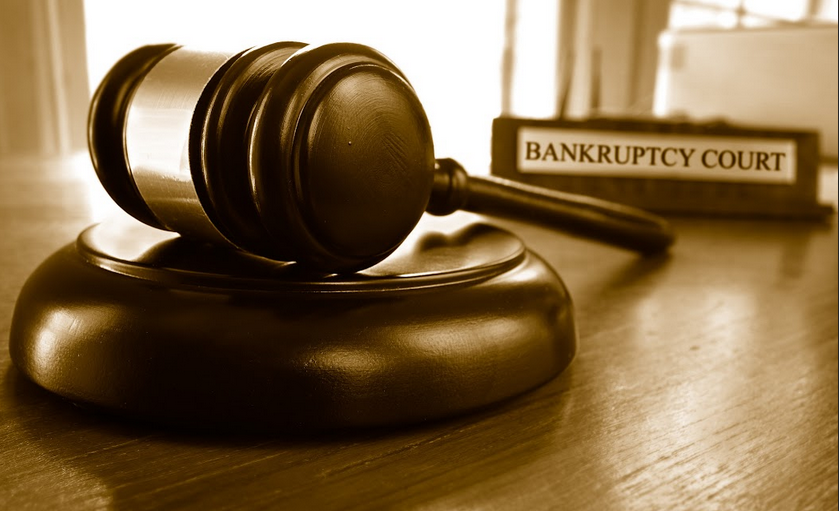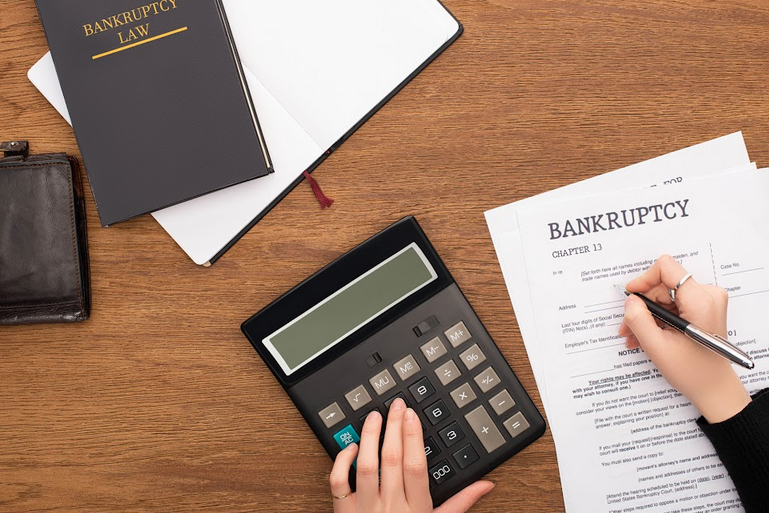Bankruptcy can be an intimidating concept for small business owners. Understanding its basics and how it relates to your business is important so you can make informed decisions about your financial future. When facing financial challenges, a small business owner should be aware of the legal implications and potential actions such as a Winding Up Petition, which can be a part of the bankruptcy process. Seeking legal advice from a bankruptcy attorney is crucial to make informed decisions.
This article examines what bankruptcy is, when filing might be necessary, and the types available. By understanding these concepts, you’ll be in a better position to manage your finances responsibly and plan more effectively.
Definition And Types Of Bankruptcy
The thought of bankruptcy can be daunting, but it doesn’t have to be. It’s important to know the basics to understand what steps your small business might take if faced with this situation.
Below are key points to consider:
- Bankruptcy is a legal proceeding that helps individuals or businesses who can’t pay their debts.
- There are two primary types of consumer bankruptcy, Chapter 7 and Chapter 13, each offering different options for relief from debt.
- Businesses may also file under either Chapter 7 or 11, depending on their specific needs and goals.
Acting early before considering filing for bankruptcy and understanding all available options allow you to make an informed decision about how to best move forward to protect yourself and your assets.
Overview Of Chapter 7 Bankruptcy
Chapter 7 bankruptcy is a form of liquidation bankruptcy that can be used by individuals and businesses alike. It allows you to discharge most of your debts through the sale of non-exempt assets, allowing for a fresh start financially. To qualify for Chapter 7 bankruptcy, you must pass the means test, which considers certain income levels and amounts of debt.
The process for filing for Chapter 7 begins with preparing all necessary documents such as an application, financial statements, statement of intent regarding how you’ll handle secured debts, tax returns from the past two years, and proof of payment on priority debts like child support or alimony payments. You’ll also need to attend credit counseling before filing.
Once these documents are prepared and filed with the court, they’ll review them, and if approved, you’ll receive a notice known as the ‘order for relief,’ which officially permits the commencement of your case.
At this point, creditors may no longer attempt collection activities such as phone calls or letters asking for payment since your petition has put an automatic stay into place, preventing any further attempts at collecting debts during the proceedings. During this time, it’s important to keep up with regular payments on mortgages or car loans so that those assets aren’t included in the liquidation process.
After meeting all requirements, including attending additional classes related to personal finances, creditors meetings, and more, you’ll get confirmation from the court that your case has been successfully discharged, giving you a new financial start.

Overview Of Chapter 11 Bankruptcy
It’s a challenging decision for a small business, but sometimes filing for Chapter 11 bankruptcy can be the best option. This type of bankruptcy is often called ‘reorganization’ because it allows businesses to restructure their finances and develop a plan to help them pay off debts over time while keeping the company afloat.
When considering this approach, it’s important to remember that filing for Chapter 11 can be costly. It can include legal fees and administrative expenses. Additionally, creditors may only pursue debt collection activities during the reorganization process if they’ve been issued a court order preventing such action.
Overall, Chapter 11 bankruptcy protects from creditors while allowing companies to become financially stable again by restructuring their financial obligations through new repayment plans. It also allows them to keep ownership of their assets and remain open for business throughout the case. With all these advantages, weighing both sides before committing to this solution for your small business is important.
The first step in filing for Chapter 11 bankruptcy is to submit a petition to the court. This document will identify your company as either an individual or organization that requires financial assistance through reorganization. Additionally, you must include all assets, liabilities, income sources, and recent tax returns to provide evidence of financial hardship.
Once the petition has been filed, it’s up to the court to appoint a trustee to review your case and recommend how to restructure your debt obligations. During this time, you may be required to provide additional information about your finances and offer alternatives such as debt consolidation or refinancing options if applicable.
You’ll need to keep close contact with your trustee and creditors throughout this period so that everyone knows what’s happening with your small business.
Overview Of Chapter 13 Bankruptcy
Under Chapter 13, debtors propose a three-to-five-year repayment plan to creditors, including detailed information about how debts will be paid back based on the debtor’s current income and expenses.
Unlike Chapter 11 bankruptcy, where repayments are determined by the court as part of a restructuring process, under Chapter 13, payments are made directly to creditors according to the terms agreed upon in the payment plan. The total amount repaid must equal at least what creditors would’ve received if all eligible assets were sold through liquidation proceedings.
Unlike standard consumer bankruptcies (Chapter 7), no discharge is involved with Chapter 13. Instead, debtors remain responsible for paying off any remaining balances once they complete their repayment plan. Furthermore, since filers continue making payments while enrolled in the program, it provides some protection against foreclosure action, which may otherwise occur if payments become delinquent.
Bankruptcy And Your Small Business: Steps To Take
Knowing where to start when considering bankruptcy for your small business can be difficult. But with the right approach, you may find that filing for bankruptcy isn’t only manageable but beneficial in the long run.
Here are steps to consider taking as part of a process before deciding on bankruptcy:
- Take stock of all assets and liabilities.
- Consult an experienced professional such as an attorney or accountant.
- Create a budget and plan how debts will be paid over time.
- Explore other options available such as debt consolidation or refinancing loans.
- Consider if it makes sense to close operations completely.
This includes understanding potential consequences like losing control of the company and having creditors take possession of certain property. Being proactive and informed will help put you in the best position possible during this challenging time.
The Bankruptcy Process: What To Expect
Understanding all the steps involved and what you should expect along the way is important.
First, it’s essential to determine which type of bankruptcy best fits your situation. There are two main types: Chapter 7 and Chapter 13. With Chapter 7, you surrender most of your assets in exchange for debt relief. Under Chapter 13, you must create a payment plan with creditors that’ll allow them to receive repayment over time.
Hiring an attorney specializing in bankruptcy law is also necessary to help guide you through this complex procedure. The lawyer can advise how to properly fill out paperwork and represent you during court hearings or creditor meetings. Additionally, they can ensure that everything is completed correctly and smoothly during the filing process.
Once the paperwork has been filed and accepted by the court, it’s time for creditors to review your case and decide whether or not they want to accept your proposed debt repayment plan. They may choose not to if they feel they won’t get enough money back from their investment in your company. However, if negotiated successfully, both parties can devise an agreement that works for everyone involved.
Impact Of Bankruptcy On Small Business Owners
Bankruptcy can devastate any entrepreneur, as it can mean the loss of their livelihood and reputation. It’s essential for small business owners who are considering filing for bankruptcy to understand what potential consequences they could face.
One consequence that should be considered is the effect on one’s credit rating. A Chapter 7 or 13 bankruptcy will remain in an individual’s record for up to 10 years, potentially causing future lenders to reject their financing requests. Additionally, some states allow creditors to pursue legal action against bankrupt individuals if debts aren’t paid off within three months after filing.
Furthermore, debtors may need to liquidate certain assets, such as cars or homes, when going through bankruptcy proceedings to repay creditors. This means businesses reliant upon these items may only continue operating fully once they find adequate replacements.
Seeking Professional Help: Bankruptcy Attorneys And Advisors
When faced with bankruptcy, navigating the legal process and financial complexities alone can be difficult. Seeking professional help from a qualified attorney or advisor is important to ensure you’re taking the right steps for your business.
Here are some key points to consider in this regard:
- Find someone who specializes in bankruptcy law specific to small businesses.
- Ensure that the lawyer has experience working with cases similar to yours
- Ask for references of successful clients they represented in the past.
- Check their credentials and certifications related to bankruptcy law.
Having an experienced professional guide you through the process will ensure that all necessary paperwork is filed correctly, deadlines are met, and court proceedings take place smoothly. Working with a qualified individual also provides peace of mind knowing that your best interests are being taken into account. Hiring an expert is essential so you can make decisions regarding your business without feeling overwhelmed or confused.
Conclusion
Understanding bankruptcy can provide peace of mind that you’re doing what’s best for your business. With proper guidance, you’ll have more clarity in navigating these challenging times and getting your business back on track financially. So, it’s important to seek professional help from a trained attorney or financial advisor to ensure you take the right steps for your unique situation.
Related Posts












